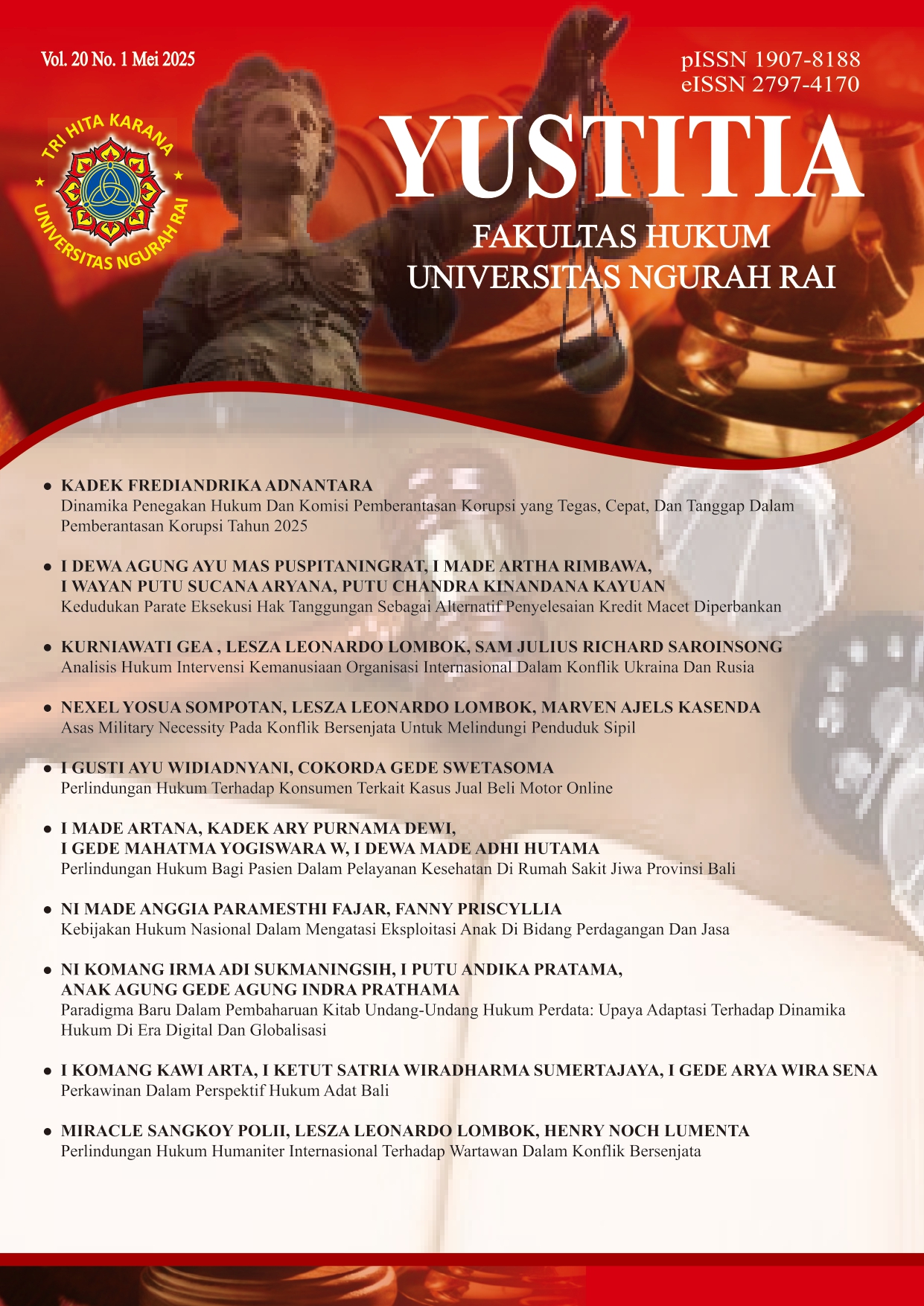KEDUDUKAN PARATE EKSEKUSI HAK TANGGUNGAN SEBAGAI ALTERNATIF PENYELESAIAN KREDIT MACET DIPERBANKAN
Abstract
Given the importance of the position of funds in credit in the development process, it
is appropriate that creditors and credit recipients as well as other related parties receive
legal protection through a rights institution. a strong guarantee and can also provide
legal certainty for all parties. This study describes the parate execution process as an
effort to resolve bad loans with mortgage guarantees, as well as the weaknesses and
strengths of the parate execution efforts.
The research method used in this study is a normative legal research method that
is prescription. This study uses secondary legal materials which include primary legal
sources and secondary legal sources. The approach used is the legal approach and the
historical approach. Data Collection techniques used document study techniques with
interpretation data analysis methods.
The results showed that the process of parate execution of mortgages as an effort to
settle bad loans was carried out based on law number 4 of 1996 concerning Mortgage
as an effort to settle bad loans with guarantees of mortgages carried out under civil
procedural law. The resolution of bad credit problems with mortgage guarantees, parate
execution is considered faster and cheaper than civil lawsuits. In the parate execution
process, there are obstacles in emptying the house, if the auction proceeds are less than
the debtor’s debt, and if there are lawsuits and resistance. However, with the parate of
execution, it provides legal certainty and the creditor’s position will be more protected if
the debtor breaks his promise, because the debtor seems to have set aside part or all of
his material assets to pay off his debts in the future.
Copyright (c) 2025 Jurnal Yustitia

This work is licensed under a Creative Commons Attribution-ShareAlike 4.0 International License.





.png)

_.png)
